GridFWD 2023
Moderater Nathan Bingham is Chief Digital Officer at POWER Engineers. Gideon Katsh is Principal Analyst for Clean Energy Development at National Grid. Tim Allen is the CEO of PXiSE. John Gibson is the Director of Avista's Innovation Lab and Chief Research & Development Engineer at Avista. Marguerite Behringer is Director of Regulatory Affairs and Industry Relations at Landis+Gyr.
Last fall, energy leaders and innovators gathered in the Pacific Northwest at a regional conference called GridFWD to discuss the challenges and opportunities of grid edge disruption and electrification. Held at the Columbia River Gorge at the Skamania Lodge in Stevenson, Washington, three hundred participants shared a wide range of potential solutions on the impact of energy transition on the industry.

The panelists in the excerpted discussion below talked about the need for utilities to embrace change and innovation, and to collaborate with third-party vendors and national labs to develop common architectures and interoperable technologies. They also emphasized the importance of data collection and analysis to optimize the grid and enable more efficient load management.
Moderated by POWER Engineers Chief Digital Officer Nathan Bingham, the panel included National Grid Principal Analyst for Clean Energy Development Gideon Katsh, PXiSE CEO Tim Allen, Avista Utilities Director of Avista Innovation Lab John Gibson, and Landis+Gyr Director of Regulatory Affairs and Industry Relations Marguerite Behringer.
POWER Engineers' Nathan Bingham: There is such a wide range of opinions on what this electrification and energy transition means to our industry. As I've traveled around the country and talked with our utility customers, I've heard some of them react to the electrification of everything with, "It's not that big of a deal and we think we've got it covered." For others it's, "This is going to disrupt everything, and we need three hundred percent more energy by 2045."
I've realized that I hear such wide opinions on what the energy transition will take because the grid is just so complex, and each utility's specific situation is different. So, electrification might take nothing for some feeders and a full rebuild for others.
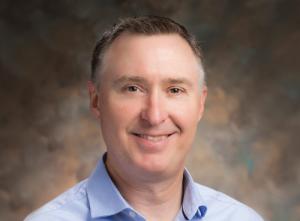 Nathan Bingham: There is a wide range of opinions on what this electrification and energy transition means to our industry. As I’ve talked with our utility customers, some react to the electrification of everything with, “It’s not that big of a deal.” For others it’s, “This is going to disrupt everything.”
Nathan Bingham: There is a wide range of opinions on what this electrification and energy transition means to our industry. As I’ve talked with our utility customers, some react to the electrification of everything with, “It’s not that big of a deal.” For others it’s, “This is going to disrupt everything.”
What do you find most exciting about what's going on in the electric industry today?
Tim Allen: After twenty years in this industry, where not a lot changed, I find the speed of transformation to be the most exciting thing. We've talked a lot at this conference about the increasing amount of generation coming from solar, wind, energy storage resources, and how it's being distributed across distribution systems, not just the transmission system like it has been historically.
I see similarities from other transformations in the telecom industry, entertainment industry, the banking industry, and these have all been made possible by innovative, secure software.
Marguerite Behringer: For me, it's the platform of possibilities that we are delivering today.
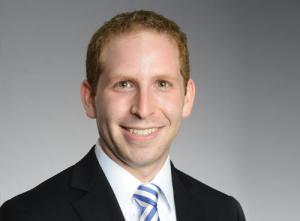 Gideon Katsh: If everything went electric today there may be some challenges, but for better or worse it’s not happening overnight. It does have to happen quickly to meet decarbonization goals, so we should act now, think about it, and determine what our strategies and plans are.
Gideon Katsh: If everything went electric today there may be some challenges, but for better or worse it’s not happening overnight. It does have to happen quickly to meet decarbonization goals, so we should act now, think about it, and determine what our strategies and plans are.
The industry is putting a lot more sensors on the grid, and this innovative hardware is opening up an environment to build software solutions, AI, and machine learning on top of granular real-time data. The possibilities feel somewhat endless to solve some of these problems that we've been thinking about for a long time.
I work a lot with utilities as well as federal representatives. As we consider the grid grants that are available today, I tell folks that the smart grid that the U.S. DOE, Congress, and industry is envisioning, "Ain't your mama's smart grid," (I live in Texas).
The American Recovery Reinvestment Act, the ARRA grants back in 2009 deployed the first generation of the smart grid. Today, we have new capabilities to capture new data at the continuous, waveform sub-second level and build use cases on top of that.
The communication technologies now available enable real-time sensing and response, allowing both customers and utilities to be informed simultaneously about what's going on with the grid.
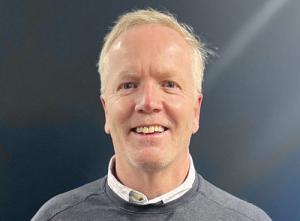 John Gibson: What’s new is that engagement with our customer. They’ll pull us to the future. We won’t direct them. They’ll pull us. As part of that effort, we are partnering with Edo (Ecodistrict operator) on a connected communities project, doing target-based demand response.
John Gibson: What’s new is that engagement with our customer. They’ll pull us to the future. We won’t direct them. They’ll pull us. As part of that effort, we are partnering with Edo (Ecodistrict operator) on a connected communities project, doing target-based demand response.
This enables a huge platform to make our systems cleaner, more reliable, and more affordable, which hopefully gets our systems and stakeholders alike talking to each other more.
Gideon Katsh: What makes me most excited right now is the tangible progress we're making. Electric vehicle sales are ticking up for passenger vehicles. We're also seeing increases in larger trucks, buses, and delivery van sales.
In addition to the growth of electric vehicles, we are seeing a lot of heat pump adoption and energy storage is coming online even faster than we thought it would. These changes reveal a challenge around what we do next and how we scale it up.
How do we go from the earliest stage of adoption to much broader adoption and meaningful electrification? It's exciting then to think about what the solutions are and how to apply them.
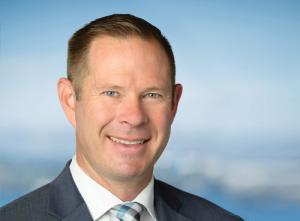 Tim Allen: Believe it or not, a lot of grid operators and distribution operators know they have problems on their system, but they don’t exactly know if that problem was created by electric vehicle chargers, or if it was created by some other loads they don’t know about.
Tim Allen: Believe it or not, a lot of grid operators and distribution operators know they have problems on their system, but they don’t exactly know if that problem was created by electric vehicle chargers, or if it was created by some other loads they don’t know about.
John Gibson: Over my career, the most exciting thing to me is to see the evolution of the utility's engagement with the customer. I can remember when we referred to customers as ratepayers. Then we moved to a stage where we call customers, industrial, residential, and commercial.
But I think in the future we will meet the customers where they are at. If the consumer is interested in affordable, reliable, safe delivery of energy, we will meet them there. If the consumer or a tribal entity is interested in sovereignty, energy independence, and clean energy, we will meet them there.
If underrepresented communities feel like they need a resiliency shelter to support their community during the times of disaster, we will meet them there. If we have consumers or prosumers who are interested in engaging with the energy ecosystem through energy districts, we will meet them there. Often people will ask me, "What's the future of utility look like?"
What's new is that engagement with our customer. They'll pull us to the future. We won't direct them. They'll pull us.
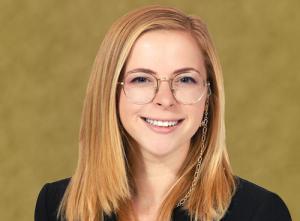 Marguerite Behringer: Regulators also need to incentivize disruption, innovation, and rate recovery of software services. This paradigm can encourage utilities to solve problems creatively. Utilities, especially investor-owned utilities, can be fairly risk averse as a financial institution.
Marguerite Behringer: Regulators also need to incentivize disruption, innovation, and rate recovery of software services. This paradigm can encourage utilities to solve problems creatively. Utilities, especially investor-owned utilities, can be fairly risk averse as a financial institution.
As a part of that effort, we are partnering with Edo (Ecodistrict operator) on a connected communities project, doing target-based demand response. We're leveraging a lot of the good work that Pacific Northwest National Labs have done in regard to architecture to support distributed controlled technologies out in the field.
So, when I think of what the future of utilities will be, it's for all of you to define. It's the consumer that will pull us in that direction. We just need to be a step ahead to ensure that we can deliver.
POWER Engineers' Nathan Bingham: Despite some recent slowdowns in passenger electric vehicle sales, the major last mile delivery fleet operators are committed to electrifying. With that rapid growth and change coming, what are some technologies or processes or policies that might help growth be accomplished in a realistic and efficient fashion?
I know there's a lot of concern about cost and labor and all these different factors perhaps limiting us from just building to meet this additional load growth. How do we meet this additional load growth that's coming due to electrification, and especially in the nearest case, electric vehicles?
Gideon Katsh: I don't know that we have a specific technology so to speak, but we're having a lot of thoughts on what kind of systems or processes are important. We're asking, "How do we plan and anticipate what we want the future to look like?"
We have very strong decarbonization goals. All vehicles, light duty, heavy duty, will be zero emission in the future. It will be the same thing for heating. All of it will move from gas or oil to electric or some combination of that, plus non-emitting fuels, which means there's going to be a lot of load growth, a lot of new demand on the grid.
We recently published an analysis on a study feeder in National Grid's U.S. service territory, looking at what happens if the vehicles in one commercial district electrify. The load growth would exceed the capabilities of distribution network in the area, as well as components at the substation and transmission network.
So, how do we not just respond to electrification but accelerate it? It could be grid investments, grid capability enhancing technologies, and customer programs.
We don't know exactly what it will look like, where exactly X amount of everything will be on our network or what it will be over time, but there are ways we're getting ahead of this. We're starting to think about working with fleets more, working with our customers more, to get a sense about where this will happen.
While planning, there are definitely a lot of choices we can make, thinking about large industrial areas with a lot of trucks that are parked there right now. Can we talk to those people and make those investments keeping in mind what their plans are?
The most common questions I get are, "Can the grid handle this?" and, "Is it going to overwhelm the power grid?" If everything went electric today there may be some challenges, but for better or worse it's not happening overnight.
It does have to happen very quickly to meet decarbonization goals, so we should act now, at the outset, to think about it, and determine what our strategies and plans are to help guide us toward the right solution.
John Gibson: Well, as a utility engineer, we're essentially facility engineers. We see the electric infrastructure as a plant, and we optimize its utilization. For example, congested transportation systems require the traffic to slow down or stop. But on the electric grid, if you exceed the capacity, the system burns down. So, we have to build for the largest peak load on the system.
Consequently, the system is underutilized, so optimizing usage is a big goal for the utility. Another concept is to deploy a variety of resources, or non-wire alternatives, on the grid. But as we look at various point solutions on the grid, it is not often that a non-wire solution competes with a wire solution.
But we also recognize we can't just look at non-wires point solutions. We think of it as a program. If we can get a variety of products and services out to our customers over time that are controllable, we can leverage those assets in a way to help address the utilization of the system. It's not unlike the energy efficiency program, except it's controllable.
You don't target energy efficiency programs at a particular point location because a wired solution is always going to address that. Instead, you administer a program broadly across the system.
So, we've ended up distributing energy resources or demand response in that context. But over time, if it's built to a standard, and has appropriate control framework in place, it can be dispatched to essentially address challenges of improving utilization of the grid.
Tim Allen: The way we operate the grid and the way the markets operate are based on the old grid, old market, central generation model. Now we have generation distributed throughout the transmission and distribution system.
One of the biggest things I see enabling this transition is using creativity, innovation, and collaboration to look at the way the markets operate, and the way utilities are managed, regulated, and operated.
I worked in a utility where distribution and transmission planning were put under the same leader with teams doing their individual jobs with their own focus and plans. Then we would present them together as if we were planning together. But we weren't.
Today, when you think about generation being in both the transmission and distribution system, generation operations typically sit in the transmission organization. It runs on transmission software. Now we have generators in the distribution system.
So, there's a big need for creativity, innovation, and collaboration. As markets develop technologies and solutions, there will be people who see these problems creep up faster than others. We've seen that working with customers around the world using software.
Like Marguerite said, you have to start with visibility and awareness and so you can understand what's causing the problems. Believe it or not, a lot of grid operators and distribution operators know they have problems on their system, but they don't exactly know if that problem was created by electric vehicle chargers, or if it was created by some other loads that they don't know about.
POWER Engineers' Nathan Bingham: Utilities already have so much information and now we're talking about how we need more information. How do they manage all this information?
Marguerite Behringer: When I previously worked with the Department of Energy, I reviewed a hundred or so AMI deployments from the ARRA grants and interviewed dozens of commissioners. Landis+Gyr has been listening to folks in the industry, thinking about how to use data, add AI and machine learning, create applications for the customer as well as the utility and automate as much as we can.
This is all possible through edge computing, which utilizes continuous high-fidelity waveform data in real time to process and react to information in a new way.
As we collect data, we need to create a platform for it. If we can work out the data sharing and the business models, there's immense opportunity, whether that's detecting your bill is too high or detecting electric on the grid or creating a digital twin or looking at your transformer life. All of those things are possible. It's just a matter of prioritizing, delivering, and setting real incentives.
Regulators also need to incentivize disruption, innovation, and rate recovery of software services. This paradigm can encourage utilities to solve problems creatively. Utilities, especially investor-owned utilities, can be fairly risk averse as a financial institution.
John Gibson: We're not going to be able to have central computing systems that pull data from the field to support decision making back at the main office and then send out a response. That intelligence is going to have to be distributed.
Also, as a utility, we often get vendors that come to us about their particular platform. The cost to interoperate with multiple vendors' solutions, whether it be the communication structure, the relays, the backend office technologies, is not sustainable.
A significant percentage of our IT budget is spent maintaining those systems. We're going to have to look at different types of interoperability models. We're going to have to look at different ways of hosting technology out toward the edge of the grid and we're going to have to look at open standards as a mechanism to drive this opportunity.



